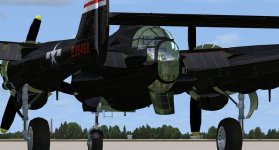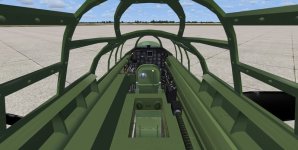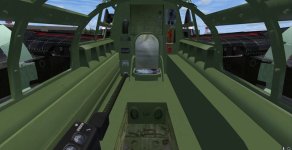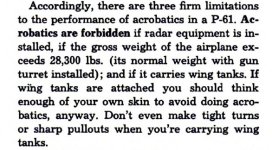-
There seems to be an uptick in Political comments in recent months. Those of us who are long time members of the site know that Political and Religious content has been banned for years. Nothing has changed. Please leave all political and religious comments out of the forums.
If you recently joined the forums you were not presented with this restriction in the terms of service. This was due to a conversion error when we went from vBulletin to Xenforo. We have updated our terms of service to reflect these corrections.
Please note any post refering to a politician will be considered political even if it is intended to be humor. Our experience is these topics have a way of dividing the forums and causing deep resentment among members. It is a poison to the community. We appreciate compliance with the rules.
The Staff of SOH
-
Please see the most recent updates in the "Where did the .com name go?" thread. Posts number 16 and 17.
You should upgrade or use an alternative browser.
Northrop P-61C Black Widow project
- Thread starter DC1973
- Start date
dharris
Charter Member
DC1973
Members +
Here is an interesting video of a P-61 https://www.youtube.com/watch?v=vDUHjD0MLqY
Great video! Nice to see some rare colour shots of the P-61 in service.
I'm beefing up the detail levels throughout the VC at the moment. The exterior model is pretty much complete, so it's all about extra realism in all three stations now in the cockpit so that folks have the best possible experience I can produce in the time I have left on the project. The RO station is now also fully operational after a bit more effort on my part.
DC1973
Members +
You have no idea how incredible it is to see the Black Widow come to life with this kind of detail! Thank you...
Ted
Thanks Ted!
A few quick shots of extra details now being added; piping and wiring etc will follow once the main details are in place.
Attachments
Seahawk72s
SOH-CM-2023

warchild
Charter Member
There are many ways to land this plane, but the proper way, the way used by most pilots during WWII ( albeit in a P-61B ) was to glide down the runway, pull up into the vertical and execute either a hammerhead, or a chandelle. Thats because they didnt have thirty miles to slow down in like the manual suggested. This is rough, this is dirty and the sound is beyond horrible, for which i profusely apologize, but none the less, here is an example of a good and proper landing, for a P-61.
Pam
Mario Donadon
Members +
This aircraft is really a joy to fly, not easy though. Pam is doing an exceptional job on the FDE, I must say.
Cheers,
Mark
Seahawk72s
SOH-CM-2023
There are many ways to land this plane, but the proper way, the way used by most pilots during WWII ( albeit in a P-61B ) was to glide down the runway, pull up into the vertical and execute either a hammerhead, or a chandelle.....
Is there an online reference that describes this necessity...?
DC1973
Members +
Is there an online reference that describes this necessity...?
I haven't been able to find one. I did find a single reference to a P-61 performing a chandelle as a braking aid prior to landing, however never with any vertical manoeuvres but the more standard climbing turn into the downwind familiar to most real-world pilots. I'd be happy to be proven wrong but I can see no tactical reason for doing so either as the risk of wing or tip-stall over an active airfield were the hammerhead manoeuvre to be performed incorrectly would produce obvious hazards, as does the initial pass presumably directly against the circuit pattern. Furthermore, rolling out off the top instead of a hammerhead would put the active field out of sight of the pilot, directly below the airplane, not something that would be done lightly without a good reason.
I suspect the P-61 ( and other aircraft ) chandelle was a precursor to the modern "run and break" pattern used by modern fighters to bring formations down swiftly while also performing a visual check of the runway condition. The chandelle manoeuvre was mostly used in air combat after an initial head-on merge, however the reverse of a chandelle, a 180-turn with constant descent, is also the military landing pattern and thus may well have been a reference for some airfield procedures.
warchild
Charter Member
The main problem with publications is that they arent cheap, and usually are quite skimpy though they provide a massive amount of relevant material, though you kind of have to ignore the repetitiveness of some of the data. There are several publishers, but the best source i have found is Amazon, where a quicj search through books for P-61 will unveil a plethora of different books available. Youll find these maneuvers as well as an incredibly rich history of the men who flew them, in there..
As a comparison for the reality these units existed in: When I landed at Camh Ran Bay in 1969, The Viet Cong walked mortars up the runway, trying to hit our plane which was a DC-8. Units stationed on small islands had it a tiny bit better and only had to deal with japanese patrol boats sitting off shore looking for target practice..
Seahawk72s
SOH-CM-2023
warchild
Charter Member
The flight manual has something to say about this...
indeed, but the books and information are there. Combat doesnt give a crap about limitations. You do what you have to do to ensure survival. Trust me on that one.
https://www.amazon.com/s/ref=nb_sb_ss_i_1_4?url=search-alias%3Dstripbooks&field-keywords=p-61+black+widow&sprefix=p-61%2Cinstant-video%2C250&crid=17Z9GGH0DWI0
[url]http://www.flyingmandocumentary.com/
[/URL]
DC1973
Members +
I have read numerous accounts of non-conform variants of approach patterns on fighter bases, one of them being the 180 degree landing which P47 Thunderbolt pilots used. This is certainly not a safe landing technique due to the high power settings that are required (if the engine misbehaves or quits during that you're toast), but was designed to get the fighters quickly to the ground and have them not roaming around the airfield in a vulnerable manner at low speed. There's a nice thread on the A2A forum about that and how to conduct it.
Cheers,
Mark
warchild
Charter Member
http://www.nightfighter.us/
Also please allow me to recommend This book. https://www.amazon.com/gp/product/1...102-2733054-9097760?s=books&v=glance&n=283155
SH427
Members +
Also, if anyone is interested in how these planes were flown, who these men were and what they did, here's an exceptional place to start. Night Fighter, the memoirs of the crew of the P-61 Jing Bow Joy Ride .
http://www.nightfighter.us/
Also please allow me to recommend This book. https://www.amazon.com/gp/product/1...102-2733054-9097760?s=books&v=glance&n=283155
dangit pam, now you got me all excited n' stuff




 I will now begin my daily check of the downloads section for a beta!
I will now begin my daily check of the downloads section for a beta! 


